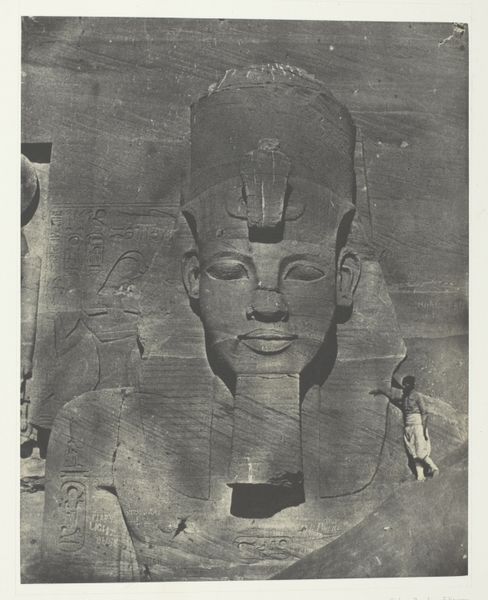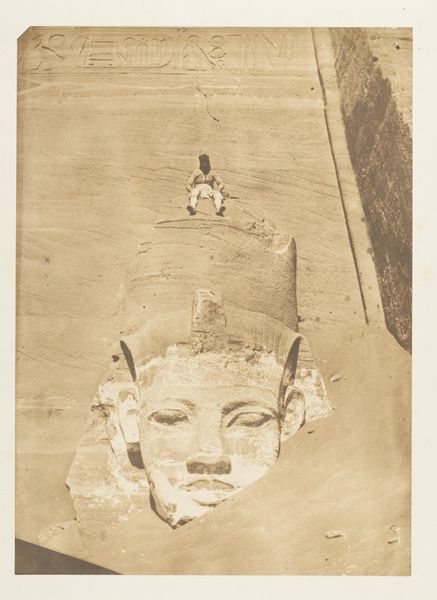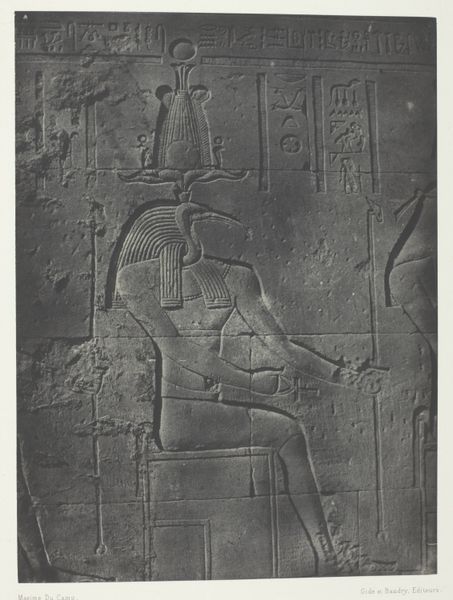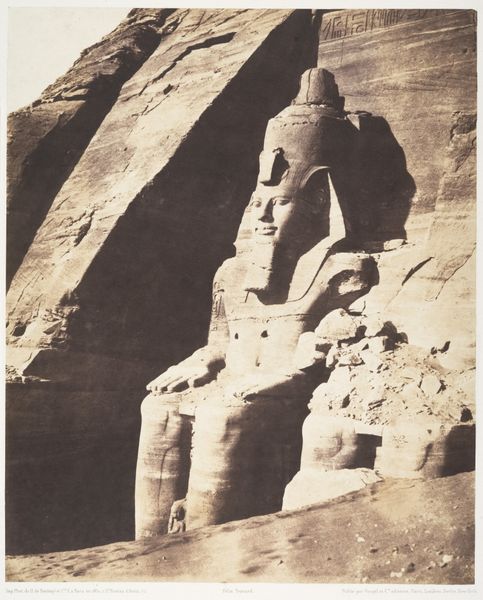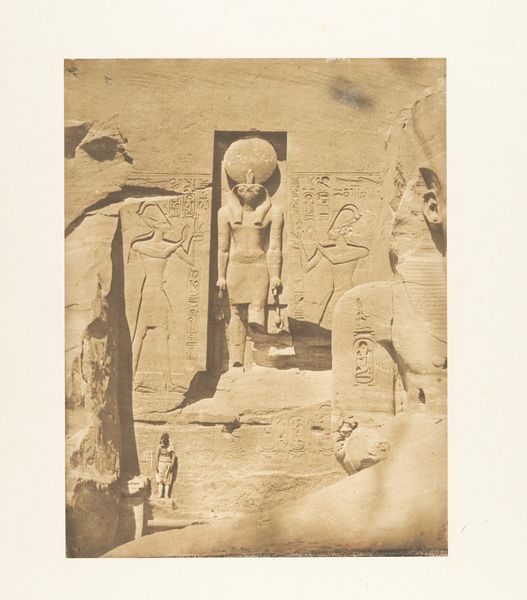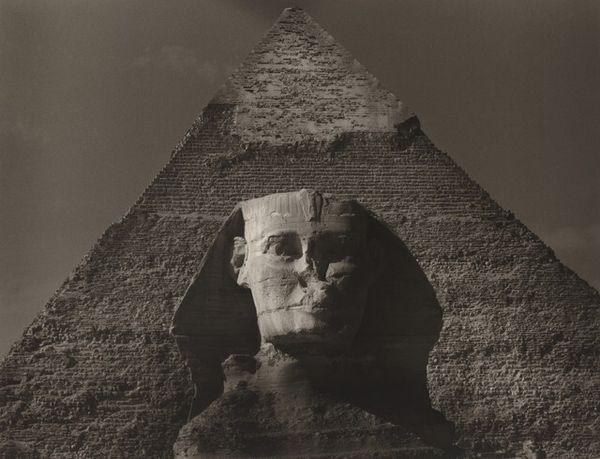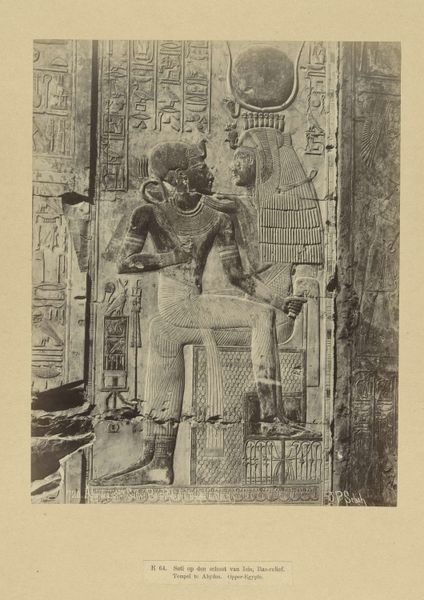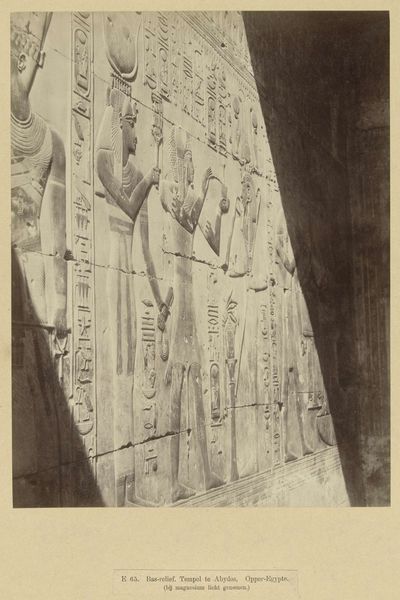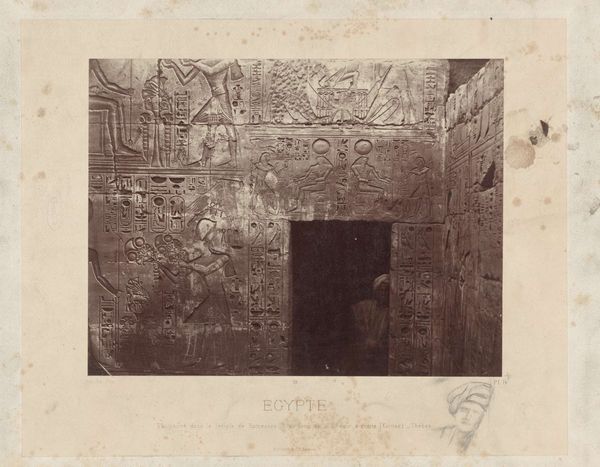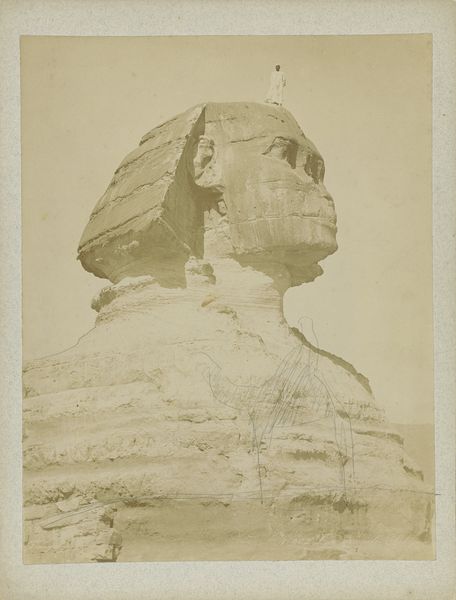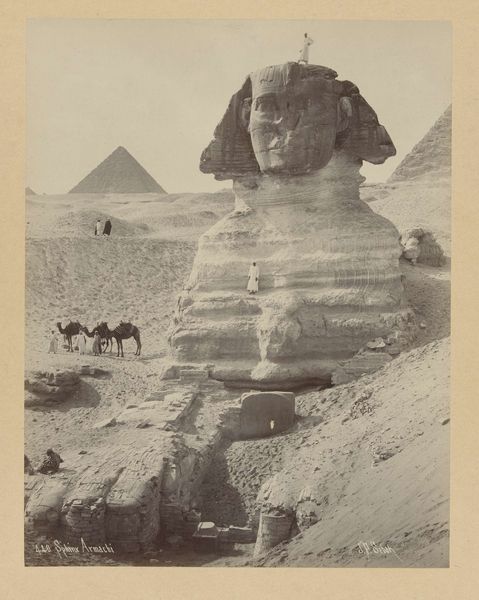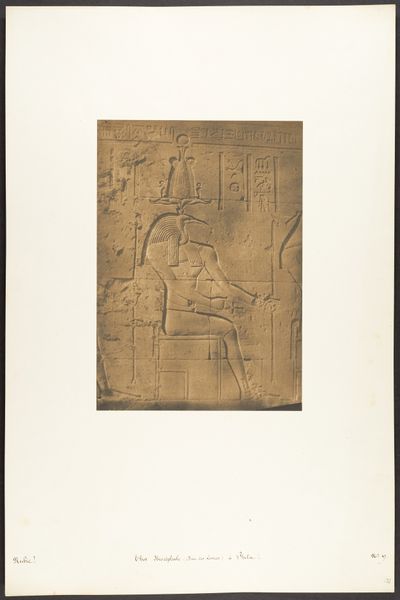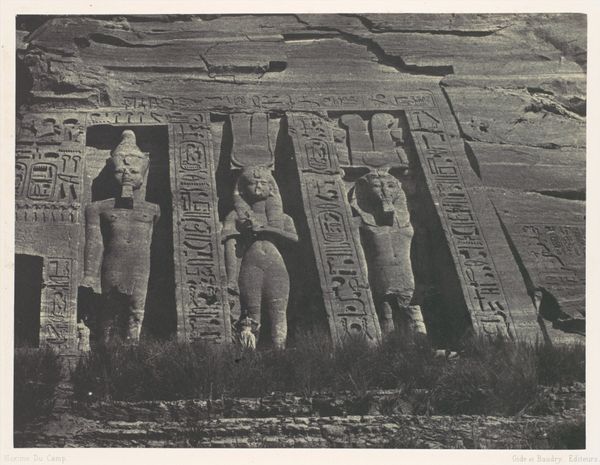
daguerreotype, photography, sculpture, architecture
#
portrait
#
landscape
#
daguerreotype
#
ancient-egyptian-art
#
photography
#
ancient-mediterranean
#
sculpture
#
architecture
Dimensions: Image: 8 3/8 × 6 5/8 in. (21.2 × 16.8 cm) Mount: 18 11/16 × 12 5/16 in. (47.5 × 31.2 cm)
Copyright: Public Domain
This photograph by Maxime Du Camp captures the colossal statues at Abu Simbel. Dominating the image is the imposing visage of Ramses II, a pharaoh who saw himself as a god on earth. Note the headdress, a symbol of royal power. It immediately recalls the Nemes headdress of Tutankhamun, yet this is a much earlier example of the iconography of divinity. Such depictions remind us of how ancient civilizations like Egypt sought to immortalize their leaders through colossal, godlike imagery. We see it echoed in later Roman imperial portraits and even in modern-day propaganda art. These symbols create a collective memory, tapping into a subconscious desire for stability and order through the image of a powerful, almost deified leader. Though separated by millennia, the intent remains constant: to evoke awe and submission. This photograph is not just an image of a historical artifact; it is an archive of recurring human impulses.
Comments
No comments
Be the first to comment and join the conversation on the ultimate creative platform.
